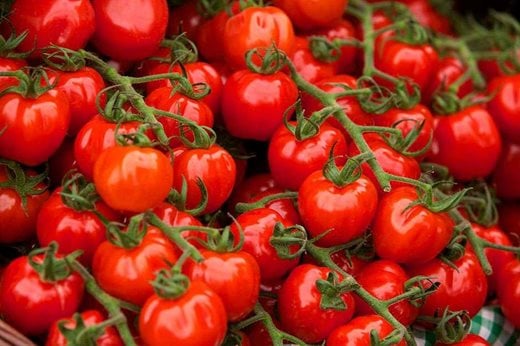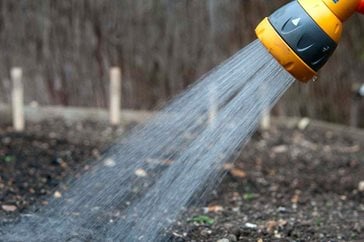Juicy ripe tomatoes, picked straight from the plant, can be enjoyed by anyone with room for a pot or growing bag in a sunny, sheltered spot
 Compact bushy cultivars of cherry tomatoes are the easiest to grow - they look decorative trailing over the edge of a pot or trough, and give you loads of small, sweet, pop-in-the-mouth fruit from a single plant.
Compact bushy cultivars of cherry tomatoes are the easiest to grow - they look decorative trailing over the edge of a pot or trough, and give you loads of small, sweet, pop-in-the-mouth fruit from a single plant.
What you need
- Containers - the larger the container, the easier it will be to look after the plants. Ideally, each plant needs at least a 30cm (12in) pot, or space them 35-45cm (14-18in) apart along a deep windowbox or trough, or in a growing bag. They can look attractive in large hanging baskets too, but need frequent watering.
- Compost - add extra nutrients to multi-purpose compost - either mix garden compost into the bottom half of the container or add slow-release fertiliser.
- Plants - small-fruited bush varieties - ‘Tumbling Tom Red’, ‘Tumbling Tom Yellow’ and ‘Hundreds and Thousands’ are often available at garden centres.
Planting
Put containers or growbags in a sunny sheltered spot. Fill containers to within 2-3cm (about 1in) of the rim with moist compost. Cut out holes in growing bags to accommodate the plants, and make slits in the base for drainage.
Plant once nights become frost free – usually mid-May in mild areas. Bury the roots deeply (up to first tiny ‘seed’ leaves on the stem) and water well, to settle the compost around them.
Cover plants with horticultural fleece on any unexpectedly cold nights.
 Growing
Growing
Water regularly to keep the compost moist – this can mean at least once a day in hot weather when the plants grow larger. As soon as fruits start to form, feed the plants regularly with a proprietary liquid tomato food according to the manufacturer’s instructions.
Get the watering and feeding right, and your plants should avoid many of the common tomato problems; however, the disease tomato blight can still be damaging in wet summers.
More on growing tomatoes
Harvest
Let the fruits get really ripe before you pick them - this is what makes home-grown fruits taste so special. The first ones should be ready from the end of July, depending on the weather and where you live. Keep watering and feeding the plants throughout summer, and remove old leaves to let light and air in. Healthy plants should carry on cropping into September.
Added extras
Fill in gaps in large containers and growing bags with sun-loving herbs such as basil or coriander, or plant nasturtiums to trail over the sides - their bright flowers, peppery leaves and young green seedpods are all edible as well as decorative. In warm areas, you could substitute some tomatoes for plants of chillies or sweet peppers, which need similar care.
Get the kids involved
It's never too soon to get kids active and helping on the vegetable plot or in the garden.
Jobs to do now
Find out what to do this month on your edible plot.

